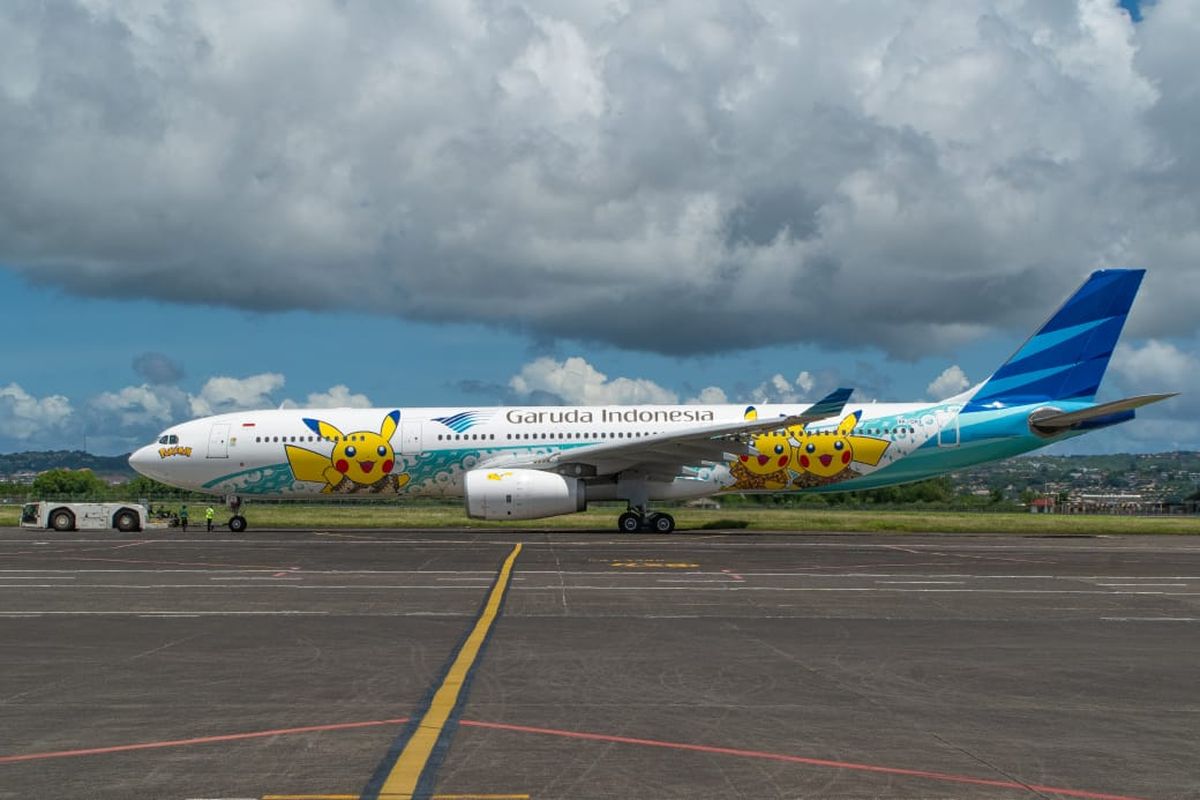Indonesia’s flag carrier, PT Garuda Indonesia Tbk (GIAA), is once again under the spotlight following discussions of a significant Garuda Danantara capital injection. This move could provide much-needed stability to the heavily indebted airline after reporting a net loss of approximately Rp1.2 trillion ($76 million) in Q1 2025. With assets eclipsed by liabilities and more than 15 grounded aircraft due to unpaid maintenance, the potential funding by sovereign wealth vehicle Danantara may be a turning point in the airline’s recovery, if handled judiciously.
A Financial Heavyweight in the Red
Garuda’s financial performance in early 2025 painted a concerning picture. According to Q1 reports, the airline suffered a loss of Rp1.2 trillion, worse than the full-year 2024 loss of Rp1.15 trillion. Revenue saw only a modest uptick of 1.6% year-on-year to roughly US$72 million, but operating and financing costs rose 2.2% and 3.9%, respectively. Overall, liabilities now surpass assets by about $1.4 billion, indicating negative equity and technical insolvency .
This precarious balance sheet has led to real-world impacts,15 aircraft remain grounded due to delayed maintenance payments, while suppliers and lessors demand upfront settlement. The urgency is clear: without external capital, further deterioration is likely, raising operational, reputational, and safety concerns.
Danantara as a Sovereign Lifeline
Enter Danantara, Indonesia’s new sovereign wealth fund created to manage and stabilize key State-Owned Enterprises (SOEs). Established in February 2025 under the oversight of President Prabowo Subianto, Danantara consolidated multiple SOEs—including Garuda, under one investment vehicle, backed by an initial capital base of about US$20 billion .
According to Bloomberg and Indonesian sources, Danantara is in early-stage discussions to inject around Rp815 trillion ($55 billion) into Garuda. The funding is expected to be drawn from dividend flows from other strong SOEs like BRI and BNI . While details remain fluid, no final decisions or disbursement timelines have been announced, the move is seen as politically necessary to maintain Danantara’s credibility and fulfill its mandate to empower state enterprises.
Strategic Rationale Behind the Injection
1. Avoiding a Precedent of Collapse
Danantara’s mission includes protecting SOEs from collapse—an event that could trigger a domino effect across the public sector. Analysts warn that failure to rescue Garuda might undermine confidence in Danantara, eroding trust among investors and stakeholders . A capital injection could thus reinforce the fund’s purpose and Indonesia’s broader economic resilience.
2. Allowing Time for Structural Reform
Critics argue that funding alone is not enough. For capital injection to yield results, Garuda must undergo comprehensive restructuring, streamlining routes, renegotiating aircraft leases, and focusing on profitable markets like domestic and select international routes (e.g., Hajj, Australia, Japan). The alignment of operational overhaul with funding forms the crux of a viable turnaround.
3. Leveraging Strategic Partnerships
Politically and financially, Danantara's engagement could facilitate stronger commercial ties. For instance, Danantara’s CEO Rosan Roeslani recently met with Boeing executives to discuss resuming cooperation with Garuda. By shoring up capital alongside fleet modernization dialogues, the airline could emerge more capable and reliable in the international aviation arena.
Garuda Responds
Garuda’s leadership, however, remains cautious. Wamildan Tsani Panjaitan, the CEO, emphasized that any capital injection and related corporate strategies are solely at the discretion of shareholders and stakeholders, which now prominently include Danantara. Garuda also clarified that it has no material information to disclose yet, but continues routine coordination with the government. In response to earlier rumors, Garuda noted that injection talks are ongoing but not finalized. Market reaction reflects this uncertainty: while the stock dropped over 20% amid financial woes, it rebounded about 7–17% on capital injection rumors .
Challenges and Caveats
Injecting capital, however sizable, is not a panacea. The airline must address:
- Debt restructuring: With interest-bearing debt around Rp62.5 trillion, Garuda must renegotiate terms to reduce interest loads.
- Fleet and maintenance liabilities: Grounded planes hurt revenue and reputation; renegotiating payment terms is essential.
- Operational discipline: Capital needs oversight through metrics, KPIs, and governance mechanisms to prevent misuse or inefficiencies.
Implications for Aviation and SOE Reform
Garuda’s potential bailout aligns with broader strategic goals. Danantara, modeled after funds like Temasek and Khazanah, aims to inject professionalism and stability into Indonesia’s SOEs. Successfully reviving Garuda could set a blueprint for future interventions in troubled state enterprises, balancing autonomy with accountability.
For the aviation sector, a reinstated and robust Garuda benefits an integrated air transport system, supports tourism, and reduces reliance on international carriers. Moreover, it enhances national prestige and connectivity—vital for Indonesia’s archipelagic geography.
What Comes Next?
- Finalizing the injection: Danantara and Garuda must settle on terms, amount, and governance be it through equity, quasi-equity, or long-term loans.
- Implementing restructuring plans: Alignment with route optimization, fleet maintenance, and leasing negotiations will test the airline’s commitments.
- Monitoring progress: Danantara will likely demand regular performance updates—profitability turnaround, cost ratios, and fleet utilization metrics.
- Rebuilding trust: Successful intervention must be accompanied by transparent communication to rebuild investor, supplier, and consumer confidence.







 Thursday, 27-11-25
Thursday, 27-11-25







